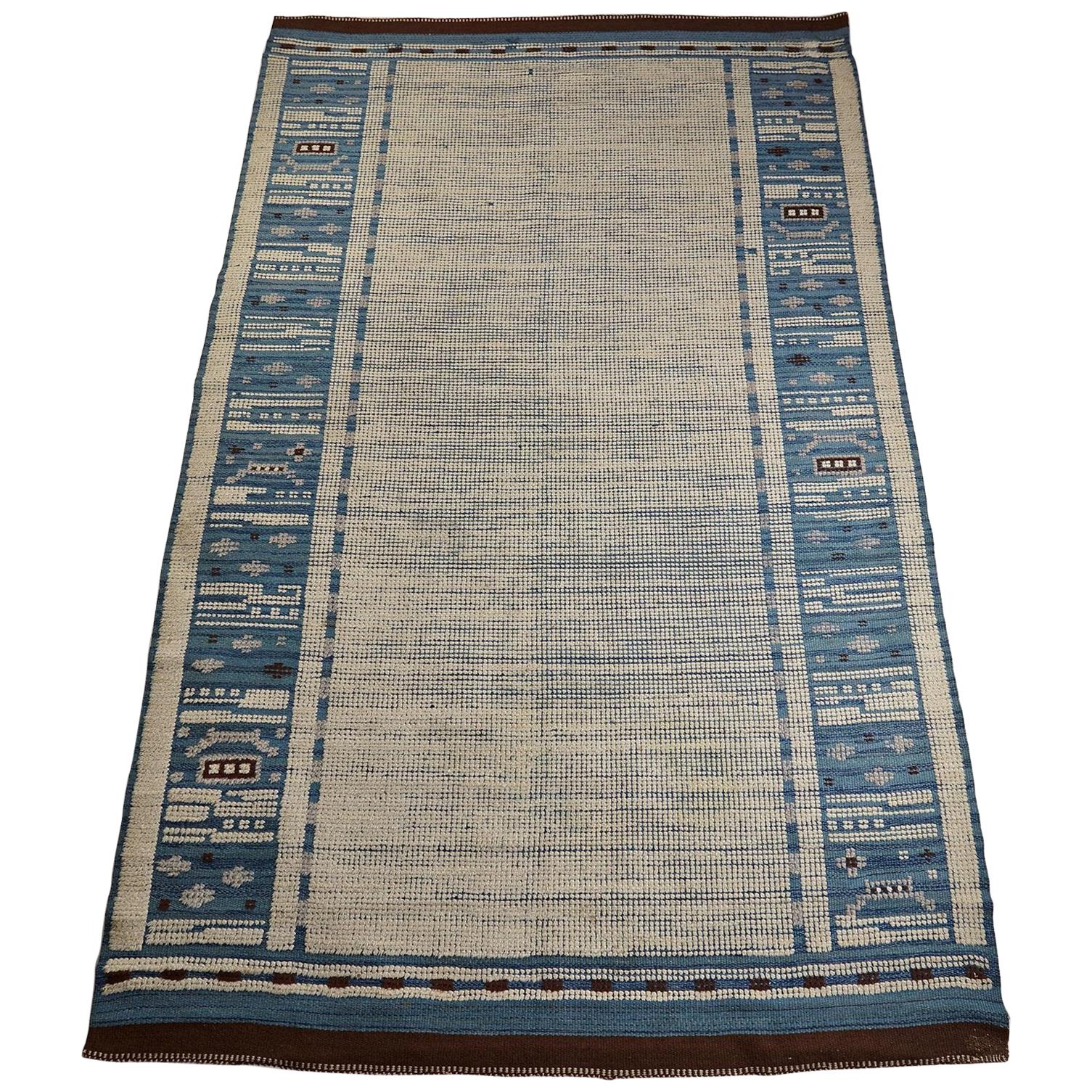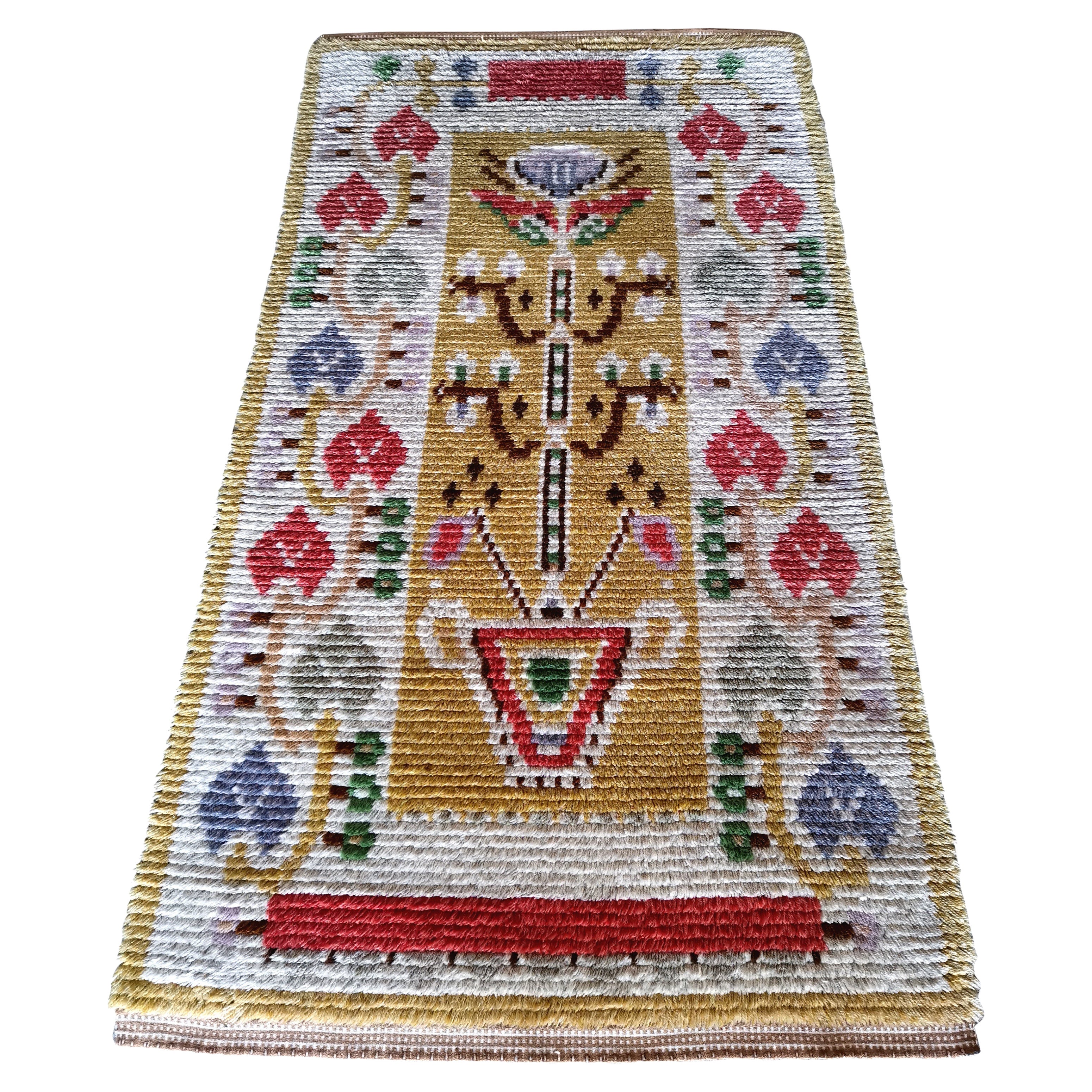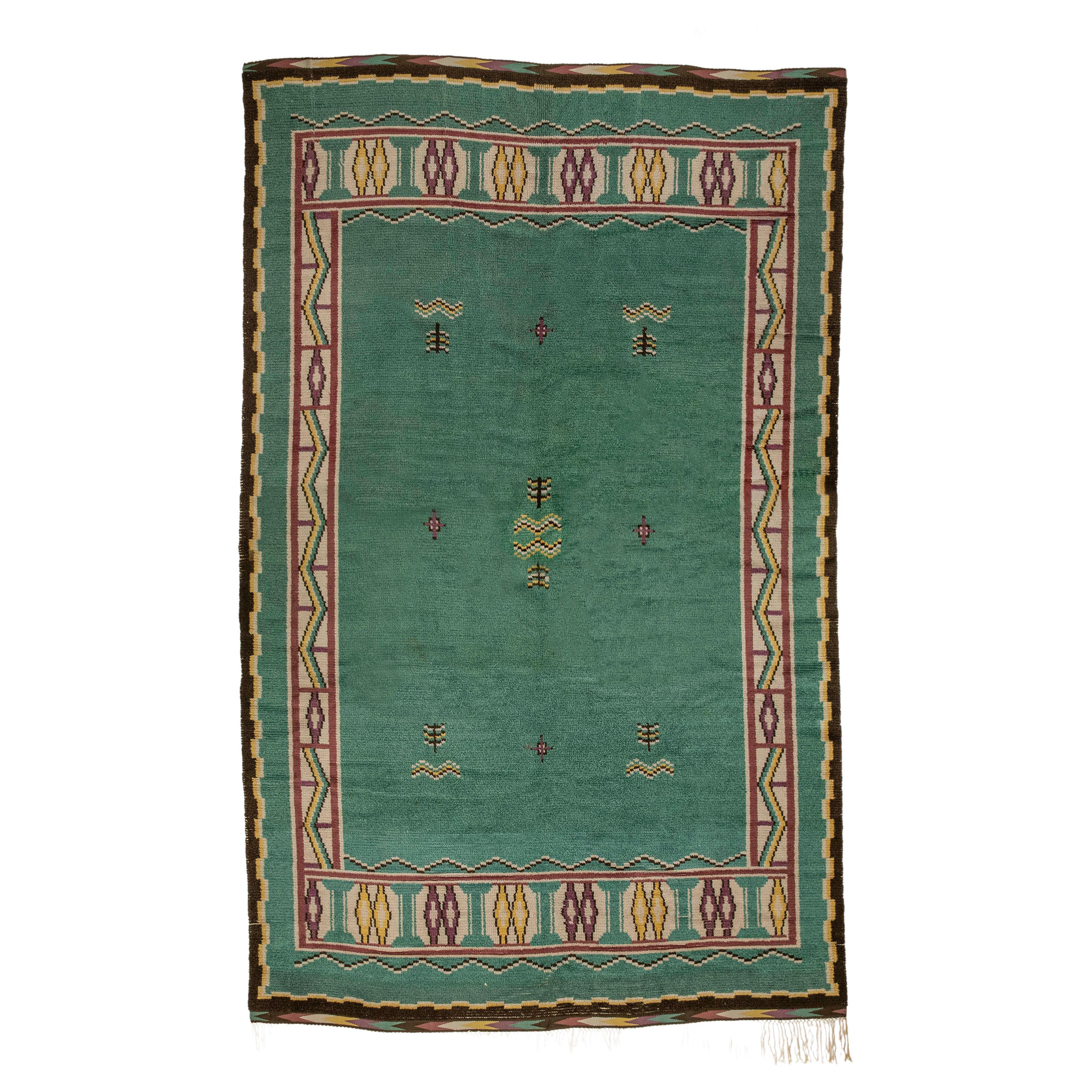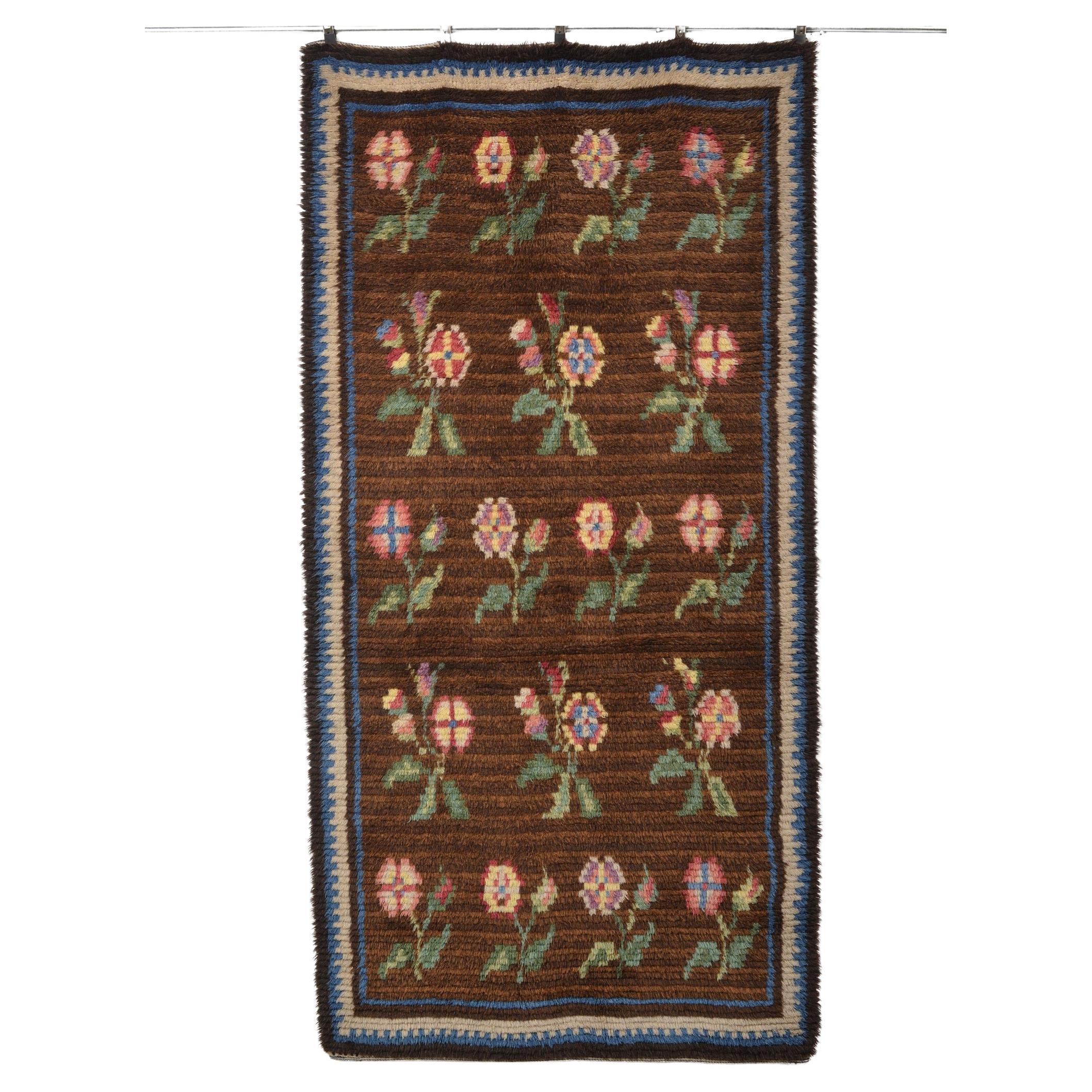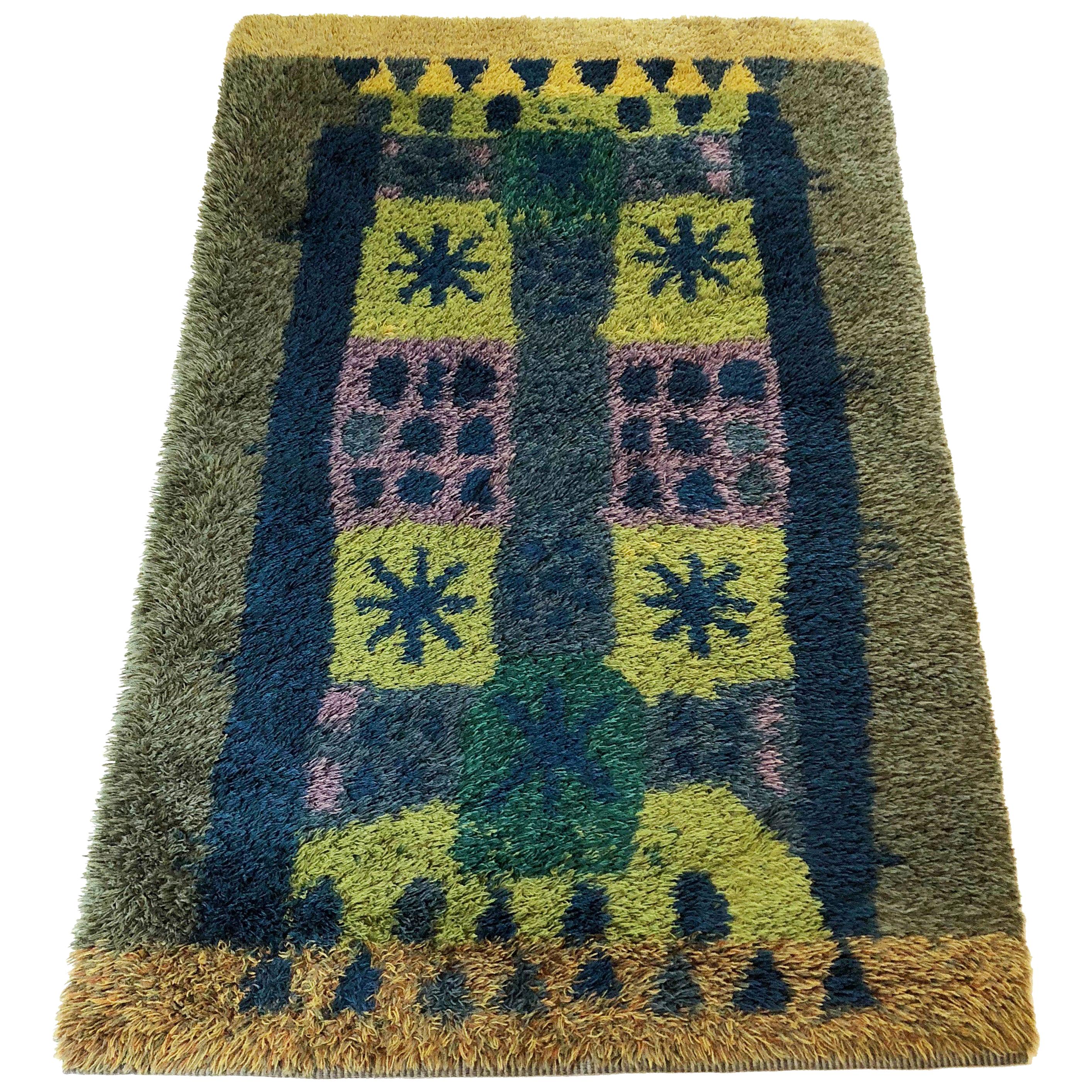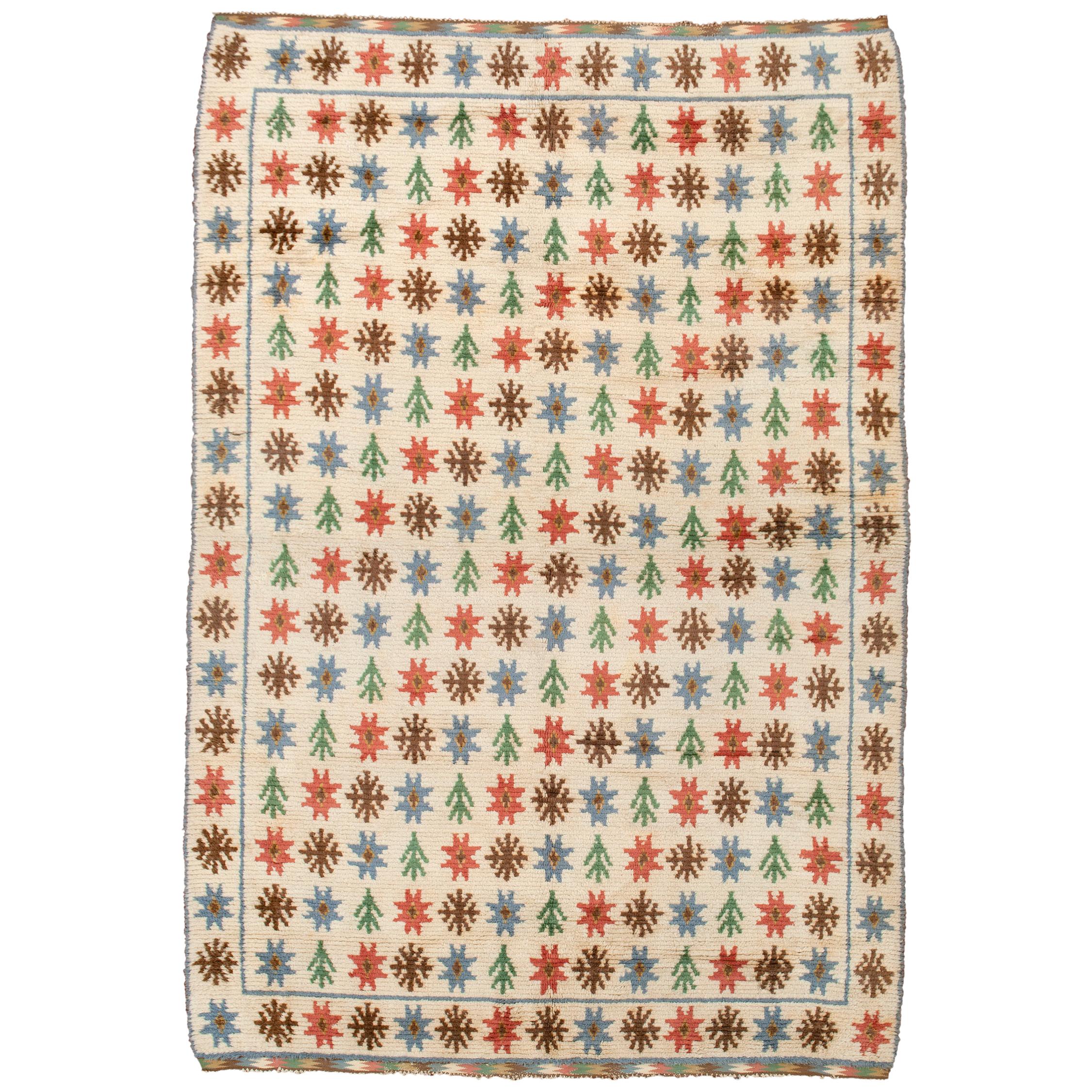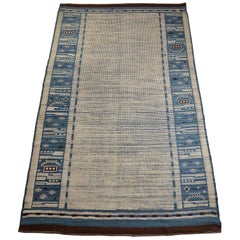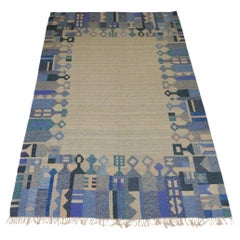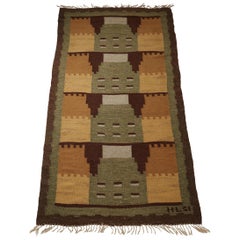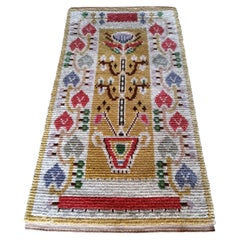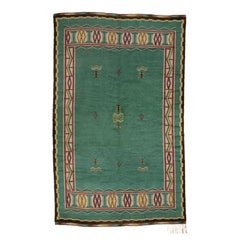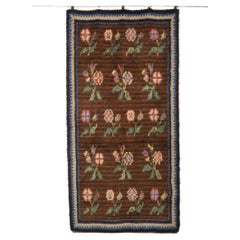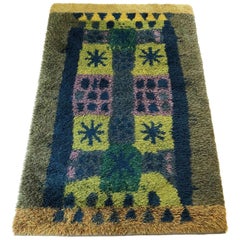Items Similar to Rug Designed by Emma Salzman, Finland, Early 1900s
Want more images or videos?
Request additional images or videos from the seller
1 of 6
Rug Designed by Emma Salzman, Finland, Early 1900s
$13,105.51
£9,687.85
€10,945
CA$17,824.39
A$19,972.14
CHF 10,396.26
MX$244,328.38
NOK 131,961.25
SEK 124,635.82
DKK 83,340.80
Shipping
Retrieving quote...The 1stDibs Promise:
Authenticity Guarantee,
Money-Back Guarantee,
24-Hour Cancellation
About the Item
Rug designed by Emma Salzman,
Finland, early 1900's.
Rya technique. Handwoven wool.
Measurements:
H: 349 cm/ 11' 5 7/16"
W. 185 cm/ 6 26/32"
- Creator:Emma Salzman (Designer)
- Dimensions:Width: 72.84 in (185 cm)Length: 137.41 in (349 cm)
- Style:Scandinavian Modern (Of the Period)
- Materials and Techniques:Wool,Hand-Woven
- Place of Origin:
- Period:1900-1909
- Date of Manufacture:1900
- Condition:Wear consistent with age and use.
- Seller Location:Stockholm, SE
- Reference Number:1stDibs: LU1006615425902
About the Seller
5.0
Recognized Seller
These prestigious sellers are industry leaders and represent the highest echelon for item quality and design.
Gold Seller
Premium sellers maintaining a 4.3+ rating and 24-hour response times
Established in 1998
1stDibs seller since 2013
202 sales on 1stDibs
Typical response time: <1 hour
- ShippingRetrieving quote...Shipping from: Stockholm, Sweden
- Return Policy
Authenticity Guarantee
In the unlikely event there’s an issue with an item’s authenticity, contact us within 1 year for a full refund. DetailsMoney-Back Guarantee
If your item is not as described, is damaged in transit, or does not arrive, contact us within 7 days for a full refund. Details24-Hour Cancellation
You have a 24-hour grace period in which to reconsider your purchase, with no questions asked.Vetted Professional Sellers
Our world-class sellers must adhere to strict standards for service and quality, maintaining the integrity of our listings.Price-Match Guarantee
If you find that a seller listed the same item for a lower price elsewhere, we’ll match it.Trusted Global Delivery
Our best-in-class carrier network provides specialized shipping options worldwide, including custom delivery.More From This Seller
View All1930s Swedish Flat-Weave Rug – Handwoven Wool with Blue and Ivory Geometric Bord
Located in Stockholm, SE
Relief pile technique.
Category
Vintage 1930s Swedish Mid-Century Modern Russian and Scandinavian Rugs
Materials
Wool
Vintage 1930s Finnish Wool Rug – Art Deco Influenced Flat-Weave Design
Located in Stockholm, SE
Handwoven wool.
Measures: L: 330 cm / 10’ 9 3/4"
W: 196 cm / 6’ 5 1/2".
Category
Mid-20th Century Finnish Mid-Century Modern Russian and Scandinavian Rugs
Materials
Wool
Rectangular Blue Swedish Rug by Gammelstads Handväveri, 1950s
Located in Stockholm, SE
Rug, anonymous for Gammelstads Handväveri,
Sweden, 1950s.
Wool.
Measures : L: 313 cm
Length including the tassels: 322 cm
W: 193 cm.
Category
Mid-20th Century Swedish Mid-Century Modern Russian and Scandinavian Rugs
Materials
Wool
Rug Designed by Helene Lindberg, Sweden, 1931
Located in Stockholm, SE
Rug, designed by Helene Lindberg.
Sweden. 1931.
Wool. Kelim technique.
Signed HL31.
Measurements:
L: 215 cm / 7' 1''
W: 111 cm / 3' 8''
Category
Vintage 1930s Swedish Scandinavian Modern Russian and Scandinavian Rugs
Materials
Wool
1950s Swedish Flat-Weave Rug – Handwoven Red and Orange Abstract Pattern
Located in Stockholm, SE
Wool.
Signed.
Measures: L: 270 cm / 8' 10 1/4''
W: 163 cm / 5' 4''.
Category
Mid-20th Century Swedish Mid-Century Modern Russian and Scandinavian Rugs
Materials
Wool
Vintage 1950s Scandinavian Wool Rug – Handwoven with Geometric Pattern
Located in Stockholm, SE
Rug, anonymous,
Sweden, 1950s.
Wool.
Rölakan technique.
Measures: L: 340 cm / 11' 3/20''
W: 254 cm / 8' 3/10''.
Category
Mid-20th Century Swedish Mid-Century Modern Russian and Scandinavian Rugs
Materials
Wool
You May Also Like
Swedish 1920s Rya Wool Rug, Flower Motif. Pure wool, Rare MINT CONDITION.
By Märta Måås-Fjetterström
Located in Ystad, SE
A Unique Swedish 1930s Rya Wool Rug.
With a vivid Symmetrical Flower Motif.
Pure wool.
Acquired directly from family of the original owner, North of Stockholm.
This Scandinavia...
Category
Vintage 1920s Swedish Scandinavian Modern Russian and Scandinavian Rugs
Materials
Wool
Mid-20th Century Swedish Pile Rug
Located in New York, NY
Sweden, mid-20th century
Handwoven
Measures: 11'9" x 7'5" (358.14 x 226.06 cm).
Category
Mid-20th Century Swedish Scandinavian Modern Russian and Scandinavian Rugs
Materials
Wool
Märta Måås-Fjetterström Early 20th- century Swedish Pile Rug
By Märta Måås-Fjetterström
Located in Los Angeles, CA
Created by Swedish textile designer Märta Måås-Fjetterström in the early to mid 20th century, this traditional wool hand-woven Swedish pile rug has features a rich brown base with mu...
Category
Early 20th Century Swedish Scandinavian Modern Russian and Scandinavian ...
Materials
Wool
Extra Large Original Scandinavian Rya Rug, Arne Lindaas for Sellgren AS, Norway
By Arne Lindaas
Located in Kirchlengern, DE
Article:
Original huge 1970s Rya rug " POP ART"
Design:
Arne Lindaas
Producer:
Hellgren and Co AS Trondheim, Norway
Description:
This rug is a great exampl...
Category
Mid-20th Century Norwegian Mid-Century Modern Western European Rugs
Materials
Wool
Mid-20th Century Swedish Pile Rug
Located in New York, NY
Sweden, mid-20th century
Handwoven
Measures: 13'0" x 8'9" (396 x 267 cm).
Category
Mid-20th Century Swedish Scandinavian Modern Russian and Scandinavian Rugs
Materials
Wool
Vintage Finnish Ryijy Rya Rug with Scandinavian Modern Folk Art Style
Located in Dallas, TX
78269 Vintage Finnish Rya rug with Scandinavian Modern Style 1'11 x 4'00. Full of tiny details and a bold expressive design combined with folk art styl...
Category
Mid-20th Century Finnish Scandinavian Modern Russian and Scandinavian Rugs
Materials
Wool
$1,500 Sale Price
20% Off
More Ways To Browse
Finland Rya
Finnish Rya Rugs
Large Scandinavian Rugs
Orange Rug Scandinavian
Swedish Rug Signed
Vintage Russian Kilim
Blue Rya Rug
Doris Leslie Blau Swedish
70s Rug
Russian Vintage Antique
Marta Maas Rugs
10x14 Scandinavian Rug
Rya Rug Green
Midcentury Scandinavian Tapestry
Scandinavian Cube
Colorful Scandinavian Rugs
70s Wool Rug
Swedish Rolakan
